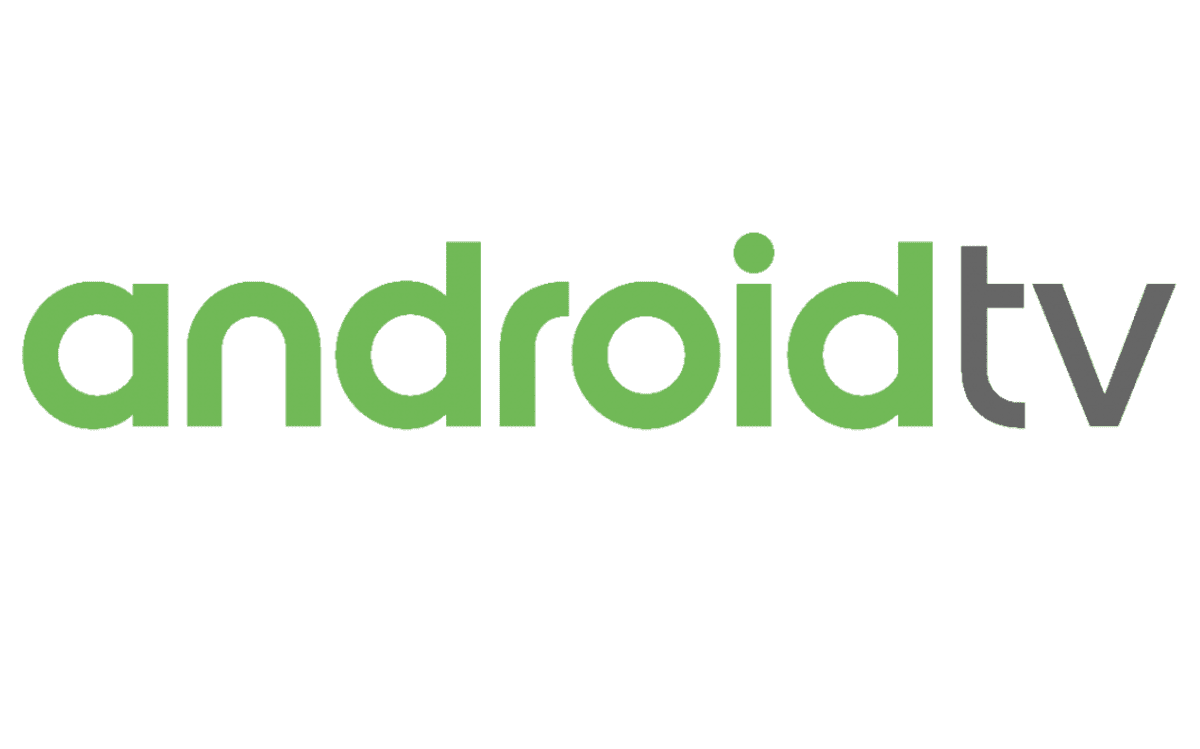Android TVs have custom versions of Android that was created by Google specifically for TVs. This basically gives users easy and quick access to all of their favorite streaming applications. What this means is that users can use applications like Hulu, Disney+, YouTube, Netflix and others directly from their Android TVs, in addition to other exciting features that are not anywhere else.
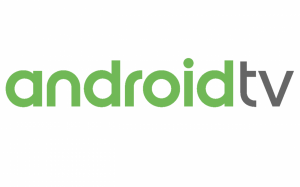
One of said features is Chromecast which allows users to send images and or videos from the Google photos, to their Android TVs.
Android TVs also have Google Assistant which can be accessed via the use of the Google Assistant button on your Android TV’s remote or controller. With this, you can control your other smart devices, check your calendar, as well as other functions.
If you opened up this article then you are most likely considering purchasing your very own Android TV. Maybe you are just curious to see what is available in today’s Android TV market. Whatever your reasons just know you are right where you should be. Mpesa Pay has taken the liberty of researching and compiling the very best Android TVs available in today’s market. We factored in various aspects like pricing, features, and everything in between.
Please keep in mind that our Best Android TVs list is in no particular order at all and is only intended to help you narrow your options down to the very best.
With no further ado, let’s get down to it!
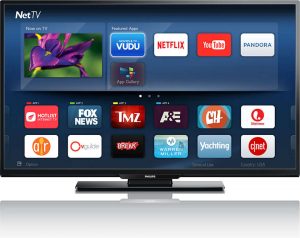
The Philips 5000 Series
One surprise on our list, is the Philips 5000 Series. This is because most consumers would agree that the Philips brand is mostly known for its Hue smart lightbulbs. But besides those bestsellers, Philips also has one of the best Android TVs available today.
The Philips 5000 Series has the 49-inch with a power use of 95W, 55-inch with a power use of 135W, and the 65-inch variant with a power use of 230W. All variants come with very crisp 4K playback displays with HDR10 and three (3) HDMI ports each.
The only downside (if we can really call it that), is that the Philips 5000 series does not come with Dolby Atmos or Dolby Vision.
If a tight budget is what you have, this is another quality Android TV that will not break your pocket.
The Philips 5000 Series has a current retail price of $318 (34,504 Kenyan Shillings).
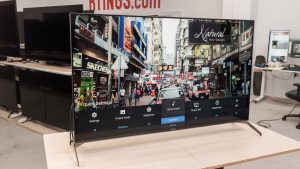
The Sony X950H
For perspective the Sony X950H, is the bigger brother of the Sony X800H. Talk about the Big Dogs yeah?
It has the 49-inch with a power use of 219 kWh per year, 55-inch with a power use of 276 kWh per year, 65-inch with a power use of 315 kWh per year, 75-inch with a power use of 373 kWh per year, and the 85-inch with a power use of 476 kWh per year variants.
Each variant has a LED display that is backed by Sony’s Triluminos Display technology and 4K HDR. Its X-Reality PRO engine ensures that all HD content viewed on the Sony X950H, is upgradeable to 4K.
It also comes with a 120Hz refresh rate for super beautiful images, Sony’s X1 Ultimate Processor which is the best by Sony in the Android TV market, and a full array dimming which helps in achieving a better contrast.

Each variant ships with built-in cable holders that help users manage their cables a lot better, the S-Force Front Surround which imitates a proper surround sound system all within the Android TV itself, and four (4) HDMI ports.
What all of that means, is that the Sony X950H delivers a much higher user experience. In exchange for a much bigger price yes, but it really is worth it. Especially if the specifications are what you are looking for.
Its starting retail price as at the time of writing this article, is $998 (108,293 Kenyan Shillings).
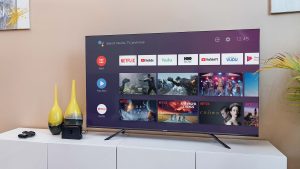
Hisense H8G Quantum
The Hisense H8G Quantum comes in 50-inch with a power use of 250 kWh per year, 55-inch with a power use of 266 kWh per year, 65-inch with a power use of 348 kWh per year, 75-inch with a power use of 441 kWh per year variants. All variants come with a 4K ULED display which reviews say is quite crisp with 700 nits of brightness for easy viewing during the day and very vibrant colours.
The Hisense H8G Quantum has up to 90 zones of local dimming. What this means is that it gives users more color accuracy and a greater contrast with Motion Rate 240.

It also comes with four (4) HDMI ports, Dolby Vision, HDR, and of course, Dolby Atmos.
The Hisense H8G Quantum, is one of the Android TVs in today’s market, that stand out. It currently has a starting retail price of $500 (54,250 Kenyan Shillings).

The TCL 3-Series
The TCL 3-Series comes in a 32-inch variant with a power use of 58 kWh per year, and a 40-inch variant with a power use of 91 kWh per year.
The TCL 3-Series is what this writer will call entry level Android TVs. This is because users depending on the size of the unit purchased, would either get the 1080 Full HD resolution or the 720 HD resolution. Its design could be described as simple with no out of the ordinary aesthetic.
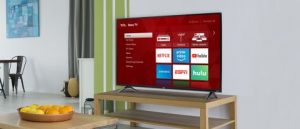
It also comes with two (2) HDMI ports with each variant and the Dolby Digital Plus audio output.
While the TCL 3-Series does not have the Dolby Vision and HDR features, that is actually okay considering its price point. If you are really pressed for funds or just looking for an entry level Android TV to start off it, you should consider this particular one.
Its retail starting price, is $130 (14,106 Kenyan Shillings).
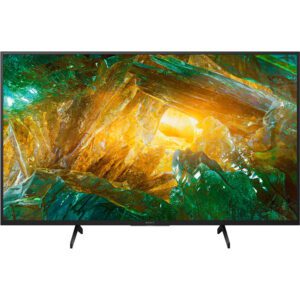
The Sony X800H
The Sony X800H comes in 43-inch with a power use of 129 kWh per year, 49-inch with a power use of 158 kWh per year, 55-inch with a power use of 161 kWh per year, 65-inch with a power use of 190 kWh per year, 75-inch with a power use of 270 kWh per year, and 85-inch with a power use of 342 kWh per year variants. Each variant comes with 4K LED displays, Dolby Vision and HDR. They also come with the Triluminos Display technology by Sony (which brings more vibrant and broader colours and the X-Reality PRO engine that helps boost all HD content to 4K.
Packed in the Sony X800H is the Sony X1 processor that delivers one of the best 4K experiences available today.
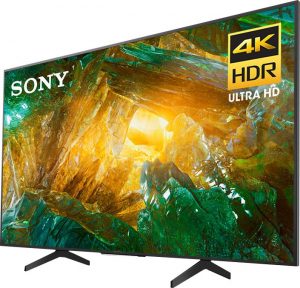
The X800H ships with the Dolby Atmos and custom X-balanced speakers that produce a really good sound. All variants come with four (4) HDMI ports each.
It currently has a starting retail price of $598 (64,884 Kenyan Shillings).

The Sony A8H
The Sony A8H comes in the 55-inch with a power use of 227 kWh per year and 65-inch with a power use of 286 kWh per year variants.
If you are looking to splurge on an Android TV, you should definitely consider this.
LED display are the most common displays in the Android TV market. But the Sony A8H breaks away from the norm. It packs an OLED display which gives its display exciting colours and deep, rich blacks. Crazy right?
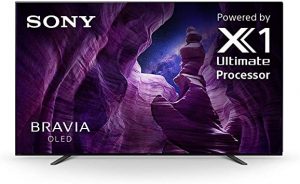
It comes with the Pixel Contrast Booster technology which essentially makes your image look a lot more vibrant than the usual OLED displays. If Sony’s aim was to give the A8H a mind-blowing display then mission accomplished!
The Sony A8H, also has Dolby Vision, HDR, Sony’s Triluminos Display tech and X-Reality PRO for 4K upscaling.
Its starting retail price is $1898 (205,952 Kenyan Shillings). That price point might be the only downside of the Android TV.
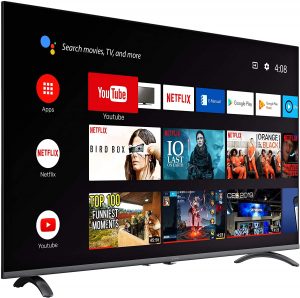
The Skyworth Q20300
Skyworth’s Q20300 comes in 50-inch with a power use of 110-240V, 55-inch with a power use of 110-240V, and 65-inch also with a power use of 110-240V variants.
The LED display on the Skyworth Q20300 supports 4K HDR videos and has Dolby Vision with a refresh rate of 60Hz. Its quad-core processor in the Skyworth Q20300 ensures that it runs without glitches.
Although Dolby’s Atmos is not supported on the Skyworth Q20300 like its Android TV counterparts, you however get two (2) built-in 10W speakers that come with DTS TruSurround audio. It also has three (3) HDMI ports.
If you are looking for an Android TV that will not break your pocket, the Skyworth Q20300 might just be The One for you.
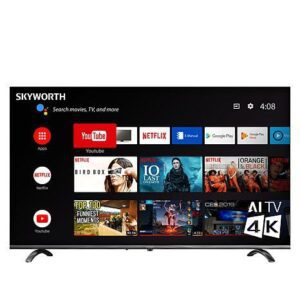
The Skyworth Q20300 currently has retail starting price of $380 (41,230 Kenyan Shillings).
And that is all for Mpesa Pay’s Best Android TVs In 2020 so far! And in no particular order.
Feel free to comment with any Android TVs you think we left out, or should have included.
Are there any other topics, news or categories that you would like us to write on? Feel free to reach out to Mpesa Pay in the comment section.

